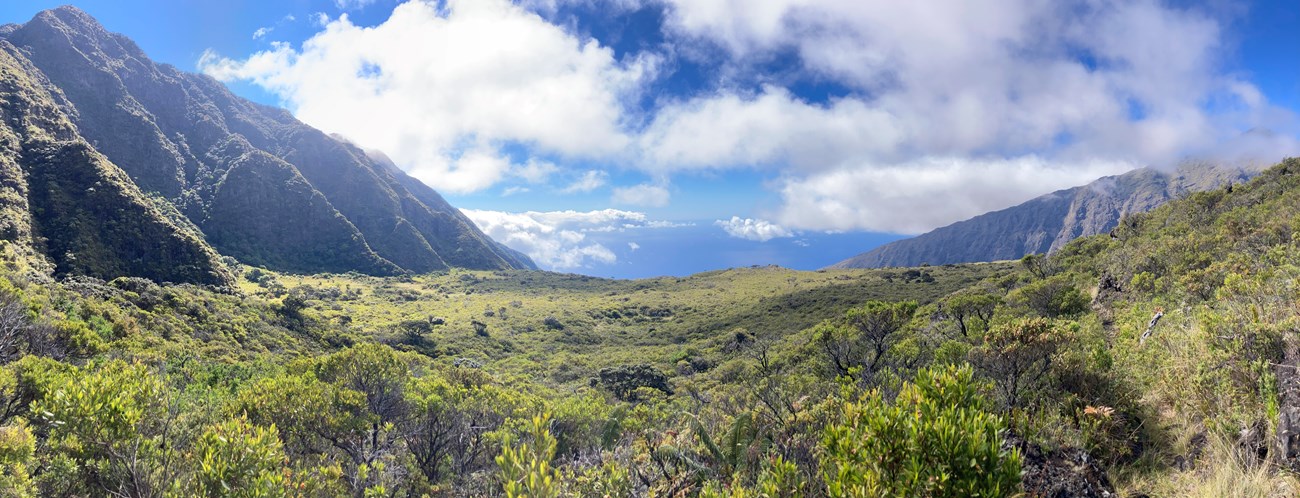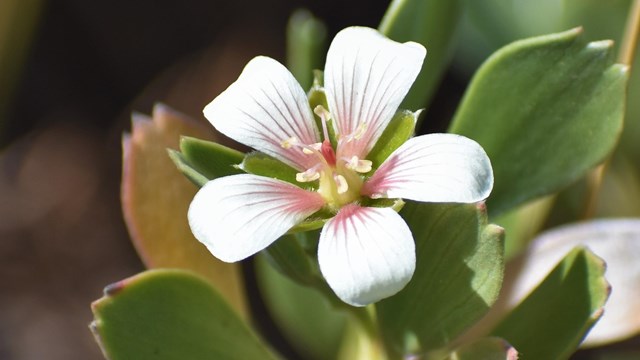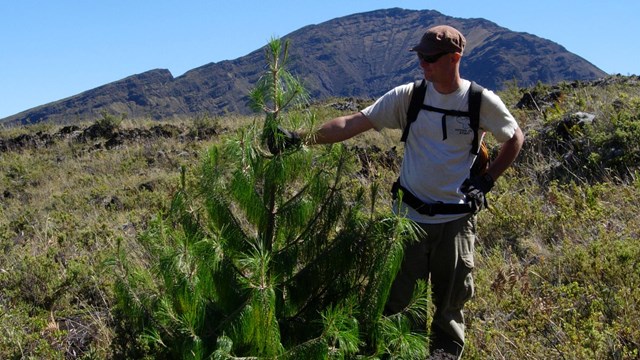|
Haleakalā National Park extends mauka to makai (mountains to sea)- from 10,023 ft of elevation at the Summit District to sea level at the coastal district of Kīpahulu. This large range of elevation change creates zones with different temperatures, wind speed, and rainfall, thus generating a variety of natural ecosystems that sustain unique plants.

NPS Photo/ K. Ferguson Plant DiversityOver 850 species of plants are found within the bounds of Haleakalā National Park. Of these, over 400 species are native, or arrived without human intervention; and more than 300 plant species are endemic to Hawaiʻi- found nowhere else in the world. This astonishing diversity reflects the variety of climates and elevations that allowed plants to fill niches from dry alpine deserts to humid, salt-sprayed coastlines. Plant communities formed in some of the most unlikely dry deserts and lush rainforests. Ethereal silverswords, bird-pollinated geraniums, Seussian na'ena'e and mintless mints are a few of the amazing plants that evolved in the unique and diverse environment on Haleakalā. 
NPS Photo/ J. Higa Wind, Wings, WavesHow could plant life establish and survive on these remote, barren, new islands? Likely a few plants arrived with the help of wind, wings (birds), and waves in the ocean carrying seeds long distances. Against these overwhelming odds a seed might arrive only to land at a site unsuited to its growth. Seemingly successful plant colonists tended to be aggressive, weedy, and capable of surviving in a pioneer habitat such as a lava fields, beaches, or bogs. It is believed that roughly one plant species was successfully established every 2,500 years. Most species that arrived found little to no competition on the islands and thus lost attributes such as thorns, thick bark, poisons, and unpalatable tastes or strongly scented oils. This loss of competitiveness has recently exposed their vulnerability to non-native species such as pigs, rats, cattle, goats, sheep, and invasive plant species such as pine trees. 
ʻĀhinahina
Explore an iconic and endemic species to Haleakalā 
Nohoanu
Haleakalā is home to 4 species of Hawaiian geraniums 
Invasive Plants
Uncover species threatening the survival of native habitats. 
NPS Photo Protecting the Native Flora of HaleakalāHaleakalā staff within resource management work tirelessly to protect and defend the territory of native and endemic Hawaiian species and often use the methods below.
|
Last updated: March 9, 2022
